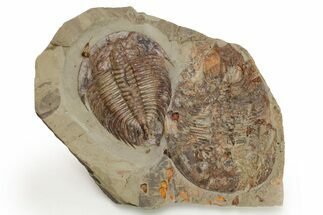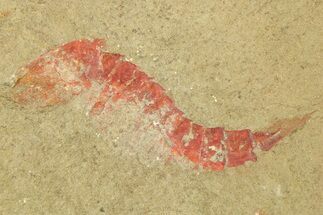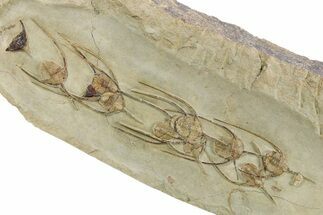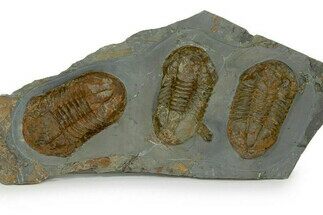This Specimen has been sold.
Cluster Of Juvenile Dikelokephalina Trilobites - With Pos/Neg Split
This is a cluster of four juvenile Dikelokephalina trilobites from the Fezouata Shale of Morocco. Almost of the specimens found of this species are quite large, sometimes reaching over a foot in length. But these are mere babies with the largest being .85" long. Includes both the positive and negative of the split.
A description of this trilobite can be found at the link below:
Trilobites of the genus Dikelokephalina from Ordovician Gondwana and Avalonia
A description of this trilobite can be found at the link below:
Trilobites of the genus Dikelokephalina from Ordovician Gondwana and Avalonia
About Trilobites
Trilobites are an extinct class of marine arthropods that thrived for nearly 270 million years, from the early Cambrian to the end of the Permian period (around 521 to 252 million years ago). They are one of the most successful and diverse groups in the history of life, with over 25,000 described species spanning a wide range of sizes, shapes, and ecological niches. Known for their distinctive, segmented exoskeletons, trilobites provide invaluable insights into the evolutionary history of arthropods and the dynamics of ancient marine ecosystems.
Trilobites are an extinct class of marine arthropods that thrived for nearly 270 million years, from the early Cambrian to the end of the Permian period (around 521 to 252 million years ago). They are one of the most successful and diverse groups in the history of life, with over 25,000 described species spanning a wide range of sizes, shapes, and ecological niches. Known for their distinctive, segmented exoskeletons, trilobites provide invaluable insights into the evolutionary history of arthropods and the dynamics of ancient marine ecosystems.
SPECIES
Dikelokephalina brenchleyi (Fortey 2010)
LOCATION
Ouled Slimane, Zagora Area, Morocco
FORMATION
Fezouata Shale
SIZE
Rock 5.2 x 3.5", Largest trilobite ,85"
CATEGORY
SUB CATEGORY
ITEM
#230519
We guarantee the authenticity of all of our specimens.
 Reviews
Reviews















